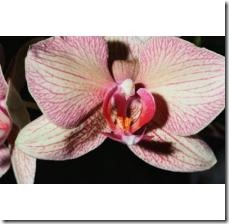Orchids are thin, elegant plants with eye-catching blossoms — and they’re low-maintenance, even when kept indoors. Careful planting and a cozy spot with plenty of indirect sunlight should keep them healthy as they grow and bloom. Outside, they add a tropical look to a garden; inside, they brighten up any space regardless of the weather outdoors.
- Difficulty:
- Moderately Easy
Instructions
things you’ll need:
- Pots
- Chopped fir tree bark (or another appropriate soil material)
- Plant the orchids in pots filled with chopped fir bark, peat moss, perlite — a type of volcanic glass — volcanic rock, charcoal, tree fern or cork. A mixture also works well. In the wild, orchids are epiphytes that grow on trees, and they need similar conditions in your garden or home.
- Check the holes on the bottoms of the pots. If they are small, cut them wider to allow plenty of drainage.
- Place the pots in a southern-facing window that receives lots of bright, indirect sunlight. Shield the orchids from midday sunburn with a sheer curtain, if necessary. If you prefer to grow the orchids outdoors, place them in a partially shady location where they won’t take a beating from the midday sun.
- Grow orchids in warm day temperatures — usually between 65 and 80 degrees Farenheit, depending on the orchid — but let the temperature drop 10 degrees F each night. This encourages flowering. Keep the humidity between 40 and 70 percent. Setting the plants close together increases the humidity for them, according to the University of Tennessee’s article "Growing Orchids in the Home."
- Water the orchids thoroughly with lukewarm water — not cold water that may damage roots — when the soil is completely dry. Allow the water to drain through.
- Fertilize the orchids every week while they are growing. Orchid fertilizer is available at some stores; otherwise, dilute balanced fertilizer — such as 10-10-10 — to one-fourth strength using water. If your orchids grow in bark, they need more nitrogen, such as that found in 20-10-10 fertilizer. During dormant or stagnant periods, stop fertilizing.
Tips & Warnings
-
Check the orchids’ coloring regularly. Healthy orchids are light to medium green in color. Yellow, red or black indicates too much light, while dark green indicates too little.
-
The University of Tennessee recommends occasional, thorough watering, rather than frequent light watering.
-
Keep air circulating around the orchids to prevent fungus and disease.
-
Don’t plant your orchids in regular soil. They need tree-like materials as potting soil to survive.
-
Don’t place orchids near vents or heaters, where they may dry out.
-
Don’t let night temperatures fall below 50 to 60 degrees F. Orchids need warm temperatures.


Deprecated: strpos(): Passing null to parameter #1 ($haystack) of type string is deprecated in /home/agriviek8Qv/agriviet.net/public_html/wp-includes/comment-template.php on line 2522